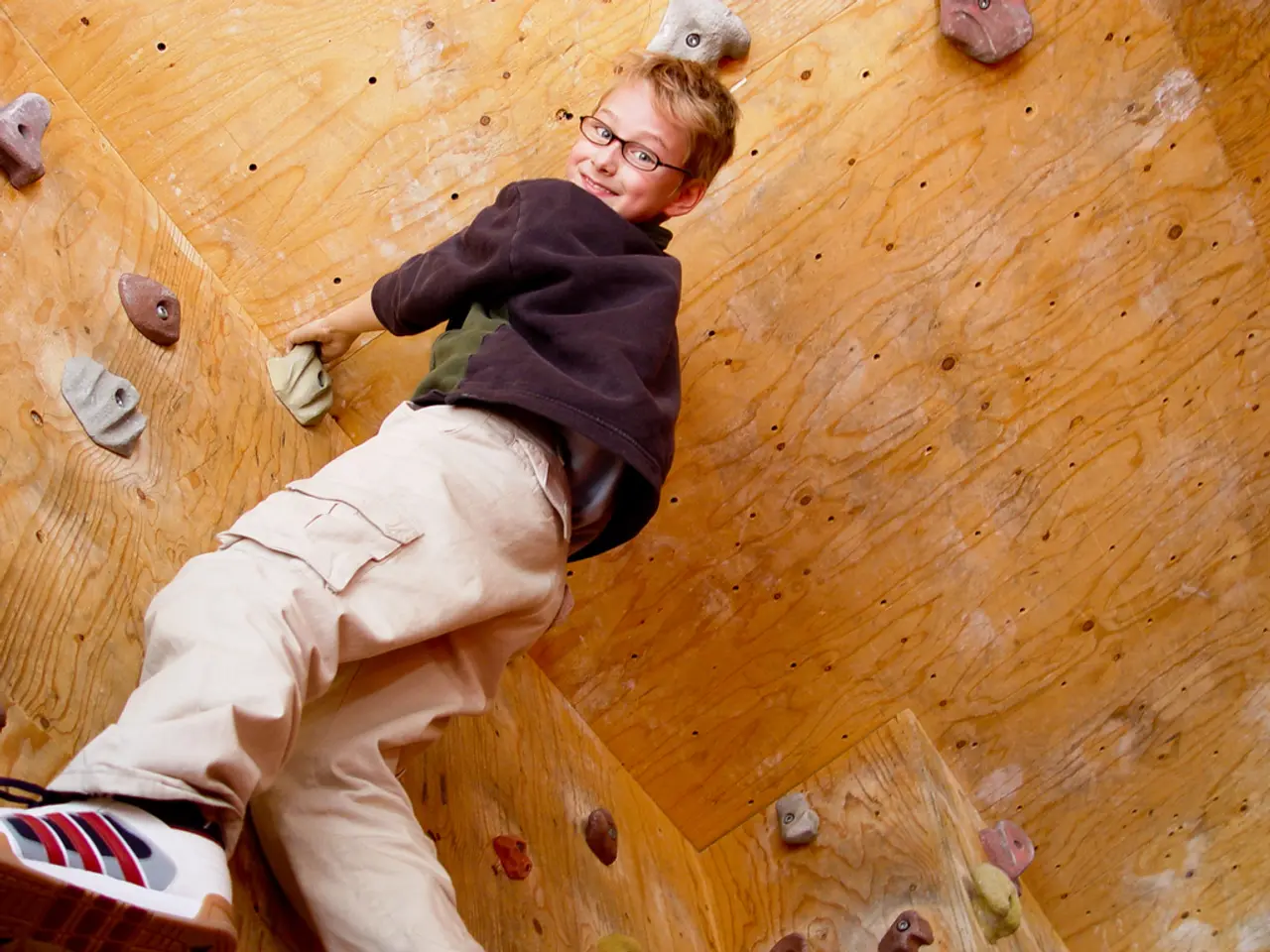Childhood Keratosis Pilaris: Causes, Symptoms, and Remedies
Keratosis pilaris, a common skin condition that causes small, rough bumps on the skin, can be a concern for many parents. This condition, which is not contagious and may be hereditary, affects children by causing small, painless bumps, dry, scaly skin, rough texture, and variations in color, often appearing on the upper arms, thighs, cheeks, and buttocks [1].
Fortunately, treatment for keratosis pilaris in children focuses on gentle moisturizing and minimal intervention. The primary goal is to manage dry skin and reduce follicular plugging through consistent, mild care routines rather than aggressive therapies [1].
Here are some key treatment strategies:
- Daily gentle moisturizing: Applying moisturizer, especially right after bathing on damp skin, helps maintain hydration and reduce roughness [1][3].
- Gentle exfoliation: Using mild physical exfoliants (like a soft loofah) or chemical exfoliants such as lactic acid or salicylic acid in very gentle formulations can help unclog hair follicles without irritating delicate skin [1][3][4].
- Avoiding skin irritation: Limiting harsh scrubbing, using lukewarm water for baths, keeping showers short, and avoiding irritating fabrics helps prevent worsening inflammation [1].
- Minimal use of medications: For inflammatory variants, short-term use of mild topical corticosteroids or calcineurin inhibitors may be considered, especially on sensitive areas like the face, but this is less common in children [1].
More advanced treatments like retinoids, ammonium lactate creams, or laser therapy are typically reserved for severe or persistent cases and should be discussed with a dermatologist [1][3][4].
In summary, children with keratosis pilaris benefit most from a gentle, moisturizing-focused skin care routine and lifestyle habits that minimize irritation, with more intensive treatments used cautiously if needed [1][3].
It's important for parents to talk to their child about the condition and the different ways to treat it. Regular skincare, such as reducing bumps and keeping the skin moisturized, can help manage keratosis pilaris [6]. If existing symptoms worsen, new symptoms arise, the scaly skin starts to itch or burn, or there is a change in appearance or color of the affected area, it is crucial to visit a doctor or dermatologist immediately [2].
For children living in dry climates, using a humidifier can help alleviate the effects of keratosis pilaris [5]. The cause of excess keratin, the protein responsible for the bumps, is unknown [1]. While many cases of keratosis pilaris gradually go away without treatment, it is hard to prevent [4].
[1] American Academy of Dermatology. (n.d.). Keratosis Pilaris. [Online]. Available: https://www.aad.org/public/diseases/contagious-skin-conditions/keratosis-pilaris
[2] American Academy of Dermatology. (n.d.). Keratosis Pilaris: Diagnosis and Treatment. [Online]. Available: https://www.aad.org/public/diseases/contagious-skin-conditions/keratosis-pilaris/diagnosis-treatment
[3] Mayo Clinic. (2020). Keratosis Pilaris. [Online]. Available: https://www.mayoclinic.org/diseases-conditions/keratosis-pilaris/symptoms-causes/syc-20373648
[4] National Institute of Arthritis and Musculoskeletal and Skin Diseases. (2020). Keratosis Pilaris. [Online]. Available: https://www.niams.nih.gov/health-topics/keratosis-pilaris
[5] National Eczema Association. (n.d.). Keratosis Pilaris. [Online]. Available: https://nationaleczema.org/eczema/conditions/keratosis-pilaris/
[6] American Academy of Pediatrics. (n.d.). Keratosis Pilaris. [Online]. Available: https://www.healthychildren.org/English/health-issues/conditions/skin-hair-nails/Pages/Keratosis-Pilaris.aspx
Parents can address keratosis pilaris in their children by adopting a gentle, health-and-wellness focused skin care routine that emphasizes daily moisturizing and mild exfoliation, while avoiding harsh scrubbing, irritating fabrics, and extended exposure to hot water. Regular communication about the condition and its treatments can help children understand their skin care regimen. Furthermore, incorporating medical-science based interventions, such as humidifiers in dry climates, may help alleviate the symptoms of keratosis pilaris.




